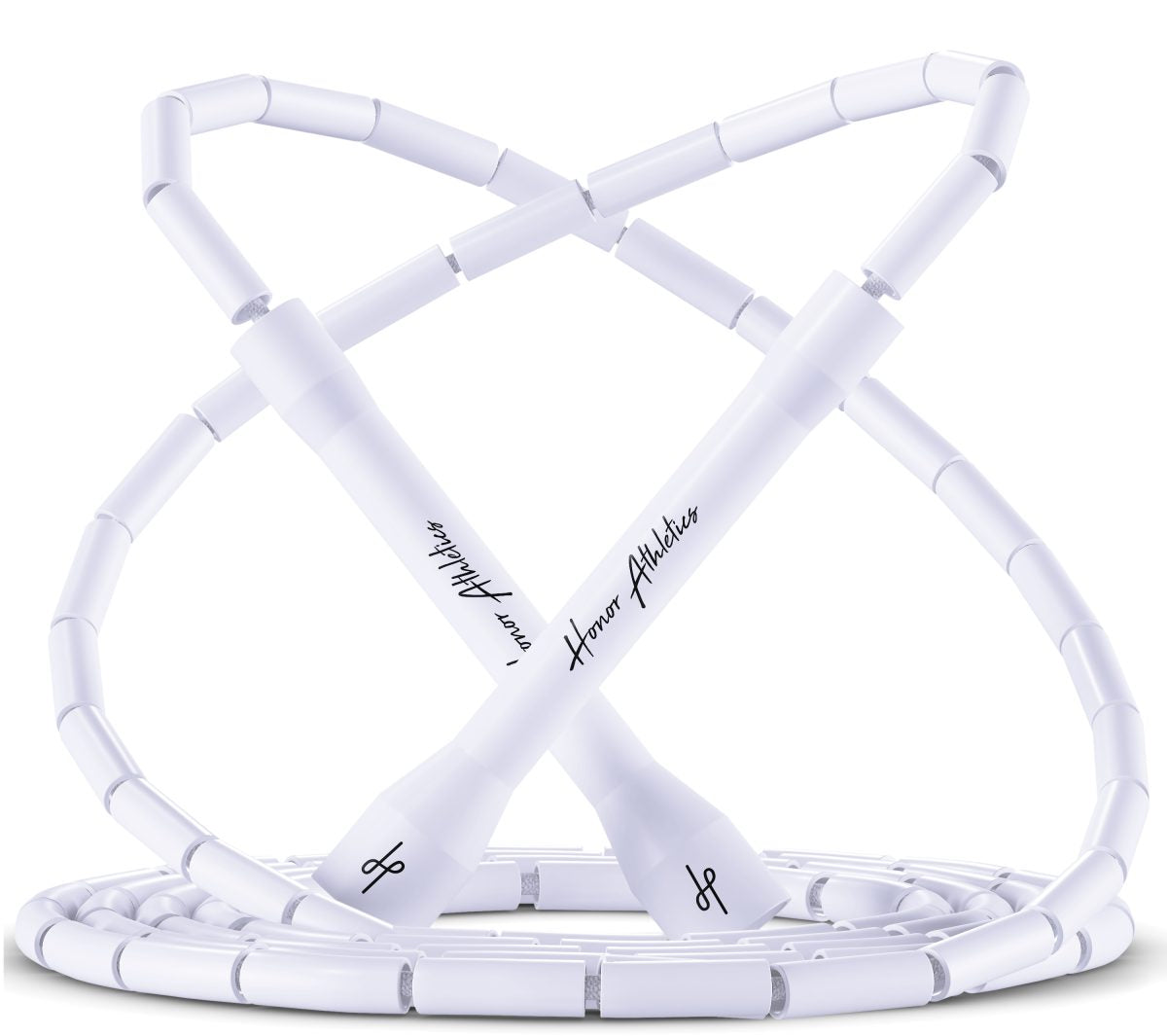
Why Every Boxer Jumps Rope
The Anatomy of Rhythm, Footwork & Conditioning
Boxing is as much about rhythm, footwork, and conditioning as it is about technique. In the ring, the one who takes the right angle, controls distance, and keeps tempo to the final bell wins. Jump rope is the “simple but effective” tool that develops all three—fast, with minimal equipment. Below: why boxers insist on rope—rhythm/timing, ankle elasticity, breathing, endurance—and plug-and-play plans you can add to your week.
🥊
1) Rhythm & Timing: The Metronome of Your Punches ⏱️
Every combination runs on an invisible metronome. With jump rope, cadence (turns per minute) stays steady while upper–lower body sync is trained. Wrist-driven turns (no shoulder shrugging) build fine motor control; eye–hand–foot coordination unifies in one flow. Result: the jab shoots and returns, the cross snaps from the hips, and defensive transitions (slip–roll) keep rhythm.

2) Footwork & Distance: Light on the Line 🦶
Jump rope teaches low jumps and forefoot/midfoot landings—the same “light contact → quick exit” feel you want in the ring. Boxer step + lateral steps improve shock absorption and repositioning inside rhythm. Micro-stabilizers around the ankle–knee–hip share load, so pivots and angle changes become quieter and cheaper.
3) Conditioning & End-of-Round Durability 💨
For boxers, it’s not just VO₂; it’s recovering quickly between explosive sequences. Rope raises HR in short/medium blocks and lets it drop fast—perfect for mid-round “burst and exit.” It also builds shoulder endurance and cardio efficiency, delaying the “heavy arms” feeling.
4) Breathing, Posture, and the Shoulder Chain 🌬️
During rope, shoulders shouldn’t bounce. Wrists work while scapulae set down & in. This makes the jab’s shoulder shield natural and reduces neck/back tension. Syncing turns with breath limits end-combo gasping.
5) Reaction & Coordination: Shrinking the Error Margin 🎯
Trips are feedback: length, wrist angle, elbow position. Fixing micro-errors makes combo→defense transitions cleaner. Regular rope reduces error tolerance; rhythm breaks are rarer and recovery is faster.
How to Add Rope to a Boxing Camp 🗓️
A) Pre-Spar/Pad “Neural Primer” (6–10 min)
- 2 min very light rope (warm-up, breath sync)
- 2 min moderate steady flow (sprinkle boxer step)
- 2 × 1 min: 40s rope / 20s active recovery — last set mini surge
Goal: CNS activation, foot–breath sync, warm shoulders.
B) Technical Days (jab–cross, slip–roll, pivot)
- Before main block: 4–6 min steady rope (lateral + boxer step)
- Between blocks: 30s rope → 30s shadow (slip–roll) × 4–6
Goal: Tie technique to the “motor”; softer exits from defense.
C) Conditioning Day Finisher (8–12 min)
- 40s rope / 20s rest × 6–10 (slight speed-up in last 3)
- Then 2 min easy rope + breathing
Goal: End-of-round stamina, HR waves, faster recovery.
D) Recovery / Low-Impact Days (8–10 min)
- Low tempo, low jumps; add 60–90s walk as needed
- Breath 4s in / 6s out; soft landings; use a mat if possible
Goal: Blood flow, joint–tendon comfort, flush “junk fatigue.”

Example 7-Day Placement (adjust to camp load) 📅
- Mon — Technique + Rope Steady (6–8 min): Guard, jab–cross; stabilize rhythm on the rope
- Tue — Strength/Conditioning + Finisher: 40/20 × 8–10; 2 min breathing
- Wed — Pre-Spar/Pad Primer: 6–8 min neural primer protocol
- Thu — Technical Defense: 30s rope → 30s slip/roll shadow × 6
- Fri — Mixed: 4 min steady → 4–6 min 30/30 → 2 min easy rope
- Sat — Optional low impact: 8–10 min quiet flow + mobility
- Sun — Rest: Mobility, breath work, walk
Rope & Surface (Boxer-Specific Choices) 🧰
- Beaded: Clear rhythm feel; ideal for timing. Easier control during footwork transitions.
- PVC / Speed: High speed; great for warm-ups and finishers. Don’t chase speed before form.
- Weighted: Adds shoulder/back endurance; keep blocks short, progress cautiously.
- Length rule: Step on midpoint; handle tips near chest height. Trim in tiny increments.
- Surface/Mat: Moderately firm, slightly springy. A jump rope mat cuts impact/noise and extends rope life.
Common Mistakes & Quick Fixes 🧯
-
Turning with the arms: Tight neck/shoulders, broken rhythm.
Fix: Elbows close; let the wrists work. -
Jumping too high: More impact, less speed.
Fix: Just clear the rope—only a few centimeters. -
Hard heel landings: Back/knee complaints, noise.
Fix: Forefoot/midfoot, quiet landings; check surface/mat. -
Wrong rope length: Constant trips.
Fix: Chest-height rule; shorten gradually. -
Goal–protocol mismatch: Brutal HIIT on a technical day.
Fix: Steady on technical days; intervals/finishers on conditioning days.
12-Minute “Round Simulation” (Home/Gym) ⏳
EMOM × 6 (2-minute cycles):
- Minute 1: 45s rope (moderate–high) + 15s breath
- Minute 2: 45s shadow boxing (1–2 → slip → 1, add pivot) + 15s breath
Note: In the last two cycles, protect flow over speed.
Safety & Recovery 🛡️
Don’t skip hand wraps; wrist alignment is your punch’s suspension. Avoid hard/slippery floors; they increase impact and noise. After sessions, 2–3 minutes of easy rope/breathing + light stretches noticeably improves next-day quality.
Next post

7-Minute Office Reset
Updated on 12 November 2025



